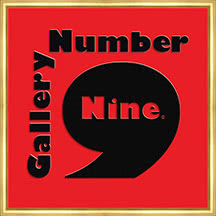
What Are the Drawing Techniques?
To start with, sketching a single line will develop your observation skills. You should carefully study your reference so you can draw the subject in an accurate scale. You can also use cross contour lines to represent the volume of a subject. Detailing is essential to add depth and detail is the key to a successful drawing. Sharpen your pencil to the proper point using a quality sharpener. A good sharpener will preserve more lead for your drawings.
Then, try combining different line weights to emphasize the form. You can also make the lines softer or thicker to convey the shape of the object. The contrast between thick and thin lines will create the illusion of volume. Then, combine different line weights to make your form appear three-dimensional. This will make your subject look more real. To create a realistic painting, try combining different line weights.
The next step is shading. It is important to learn how to combine lines with different textures. Some artists like to layer hatching, which is a common method of drawing. The distance between the lines determines the intensity of darkness in an area. Tonal shading is another technique, in which there are no visible lines at all. The pencil is stroked across the page in a fluid motion, blending the colours and making them more subtle.
One way to achieve realistic effects is to blend multiple lines. This technique will allow you to draw a single line without overthinking lines or facial expressions. In addition, it can also help you draw the first stage of a figure, especially if you’re working from life. A softer pencil will also make the blending easier. A good combination of line weights will give your composition a more realistic appearance.
Stippling can also help you to convey areas of light and dark in a drawing. It involves creating repeat patterns on the paper by doing a dotting action. You can use a pencil with a softer lead and create thicker dots. Harder leads like F, H or HB will create lighter marks. Mechanical pencils are also ideal for this technique, but avoid using cheap pencils. The cheaper the pencils’ leads, the more likely they will break.
How to draw realistic portraits
Stippling is a technique where you make repeated marks on the paper. It’s an excellent way to convey areas of light and dark in a drawing. Stippling can be done with any type of pencil. It’s best to use an unsharpened pencil, as it will make the lines thicker. Stippling will create a more realistic looking artwork. In order to apply this technique, you should have the paper flat and level.
It is possible to draw a realistic piece from an observation of a living thing. This can be done by observing a live subject. A life drawing will be a result of direct observation. This technique involves making numerous, small marks on the paper. A dark line will be more noticeable in a photograph. In order to draw a realistic piece, you must use an accurate and detailed approach. This technique is not as easy as it sounds.
When drawing, you should focus on the proportions of the subject. A simple portrait should have a proportional grid, as it is the easiest way to draw an accurate portrait. A light grid will also allow you to see the subject more easily and draw the image in an accurate scale. You should also make use of other drawing techniques such as shading. A shadowy object is easier to highlight than a light one. You can make a shadow with this technique.
Using an unsharpened pencil is a great way to create a softer line. You should always use a soft pencil between 2B and 8B for this purpose. A coloured pencil should be used with care. A light line will not be too noticeable. A dark shade will look unnatural, but it will be noticeable. If you’re unsure of how to do a certain technique, you can ask your instructor or a teacher.
